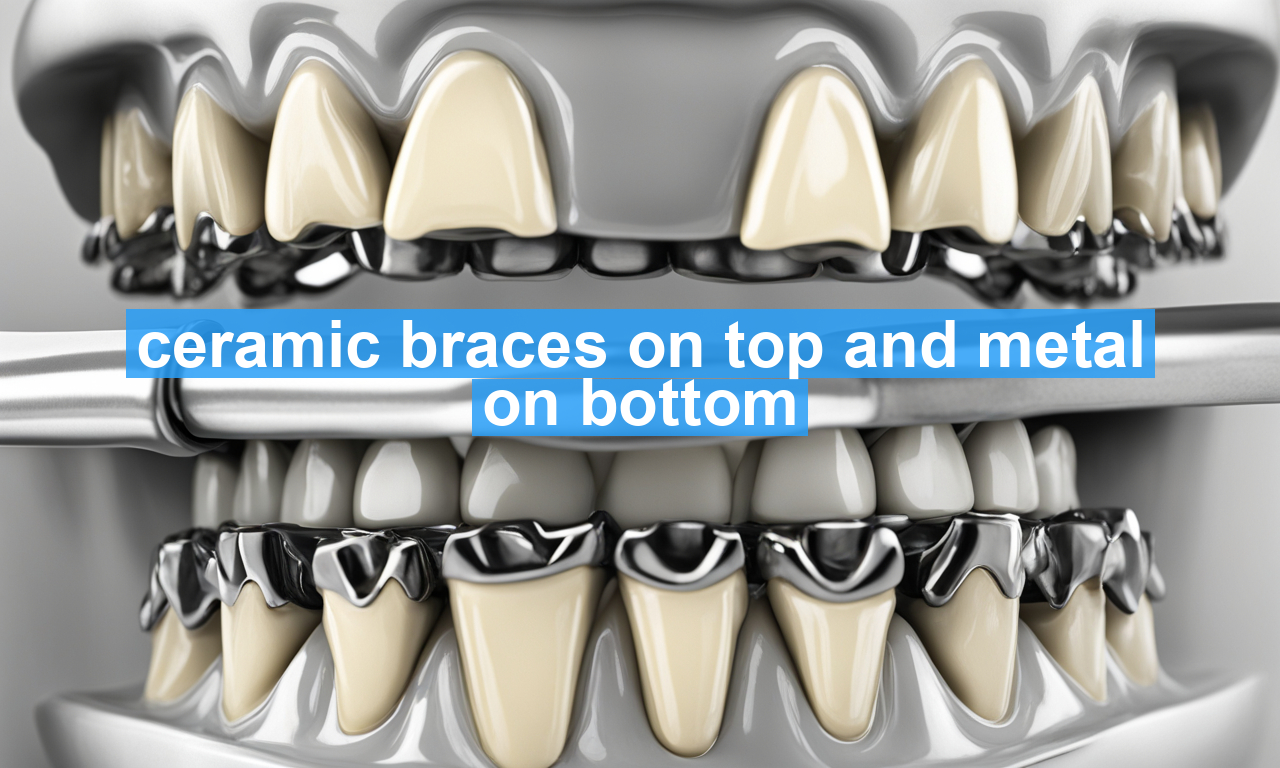When it comes to straightening teeth, braces are a time-tested solution, trusted by millions around the globe. Yet, the decision on which type of braces to choose—ceramic, metal, or something else entirely—can be overwhelming. While traditional metal braces are highly effective and durable, ceramic braces offer aesthetic benefits that many find appealing. But have you ever thought about combining the two? Yes, it’s entirely possible to have ceramic braces on the top teeth and metal braces on the bottom. Let’s explore why this might be the right choice for you and clear up some common misconceptions.
Why Choose Ceramic on Top and Metal on Bottom?
Combining ceramic braces on the top and metal braces on the bottom offers a unique blend of aesthetics and functionality. Here’s why many patients find this approach appealing:
- Discreet Appearance: Ceramic braces are made of clear or tooth-colored materials that blend in with the natural color of teeth. Placing them on the top teeth, which are more visible when you smile or talk, helps maintain a more natural appearance.
- Cost-Effectiveness: Ceramic braces tend to be more expensive than their metal counterparts. By opting for metal braces on the bottom teeth, you can achieve a balance between aesthetics and cost.
- Strength and Durability: Metal braces are known for their robustness, which is handy for withstanding the forces exerted by the jaw. Using them on the bottom teeth, which generally require more strength, can be beneficial.
Common Questions Answered
Are Ceramic Braces as Effective as Metal Ones?
Ceramic braces are just as effective as metal braces in straightening teeth and correcting bite issues. They work similarly by applying continuous pressure to move teeth into desired positions over time. While they might be slightly less durable than metal braces and more susceptible to staining, their effectiveness in treatment outcomes is on par.
Will Ceramic Braces Stain?
Yes, staining can be an issue with ceramic braces. The brackets themselves are stain-resistant, but the elastic ties holding the wires can discolor over time, particularly if you consume dark-colored foods or beverages like coffee, tea, or curry. Regular dental check-ups for tie adjustments can help mitigate this issue.
How Noticeable Will Metal Braces Be on My Bottom Teeth?
Although metal braces are more noticeable than ceramic ones, remember that they will be on your bottom teeth, less visible when you smile. Plus, advancements in orthodontic technology have made metal brackets smaller and less conspicuous.
How Long Will I Have to Wear Them?
The duration you wear braces depends on the complexity of your dental issues and your treatment plan. On average, treatment time with braces ranges from 18 to 24 months. Your orthodontist can provide a more precise estimate based on your specific needs.
Potential Downsides to Consider
While a mix of ceramic on top and metal on bottom offers several advantages, it’s essential to consider some potential downsides:
- Staining Care: As previously mentioned, ceramic braces require meticulous care to avoid staining, especially if you enjoy foods and drinks known for leaving a mark.
- Increased Cost: This option may still be more expensive than fully metal braces, though less costly than opting for ceramic braces throughout.
- Fragility: Ceramic brackets are more fragile than metal ones, which can lead to breakages if not handled carefully during activities.
Is This Option Right for You?
The choice between ceramic and metal braces—or a combination of both—depends on various factors: your dental needs, aesthetic concerns, and budget. A thorough discussion with your orthodontist can help lay out the pros and cons, ensuring you make an informed decision tailored to your lifestyle and treatment goals.
For a deeper dive into understanding braces and orthodontic care, check out this informative page on the Mayo Clinic’s braces guide, which offers a wealth of knowledge about the intricacies of orthodontic treatments.
If you’re interested in the materials and effectiveness of different types of braces, including ceramic ones, the Healthline guide on braces provides excellent insights into what you can expect from each kind.
In conclusion, opting for ceramic on top and metal on the bottom is more than just a compromise; it’s a strategic decision that leverages the strengths of both types of braces. It allows for aesthetic appeal without entirely breaking the bank, ensuring that your journey to a perfect smile is both economical and visually pleasing. Always remember that every smile is unique, so personalizing your treatment plan with your orthodontist is key!

